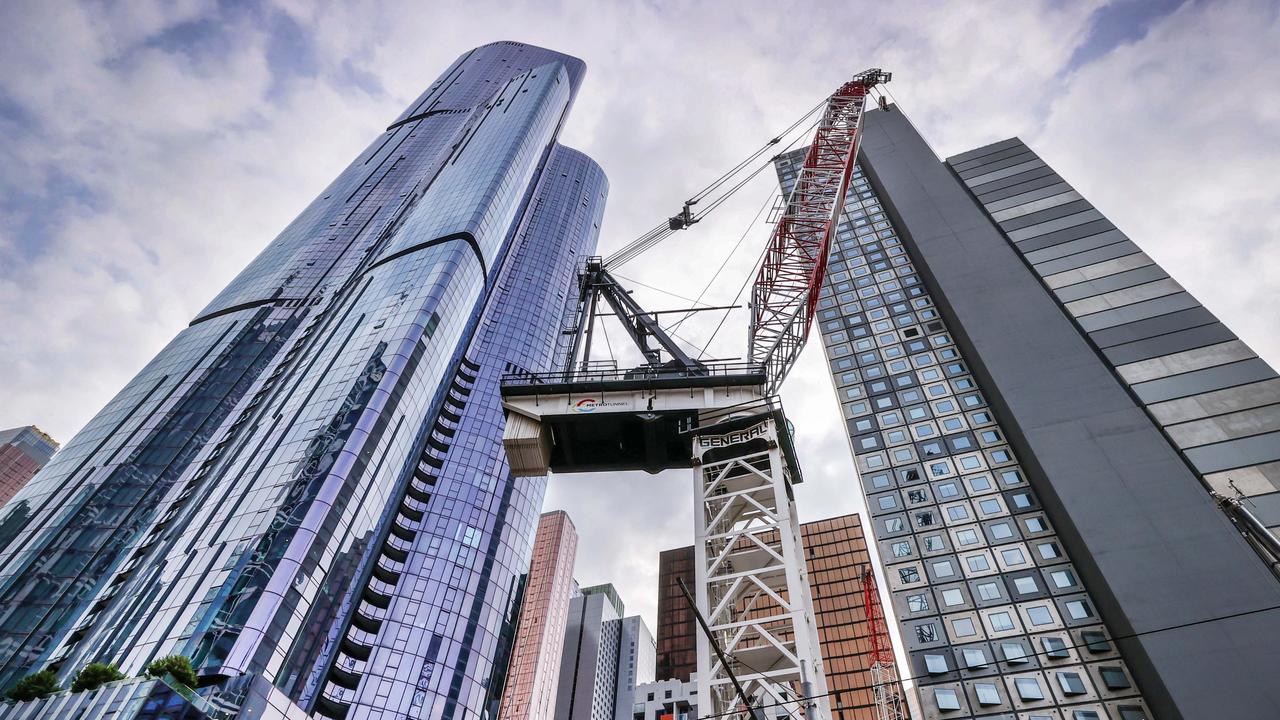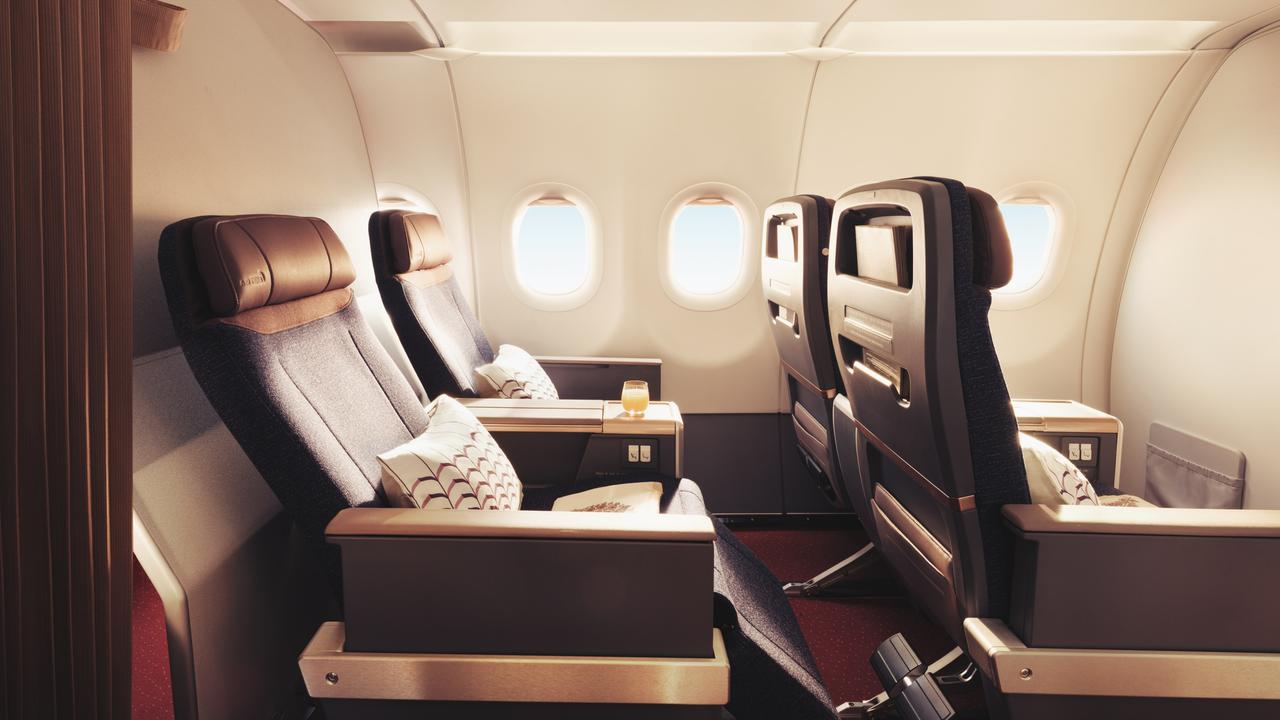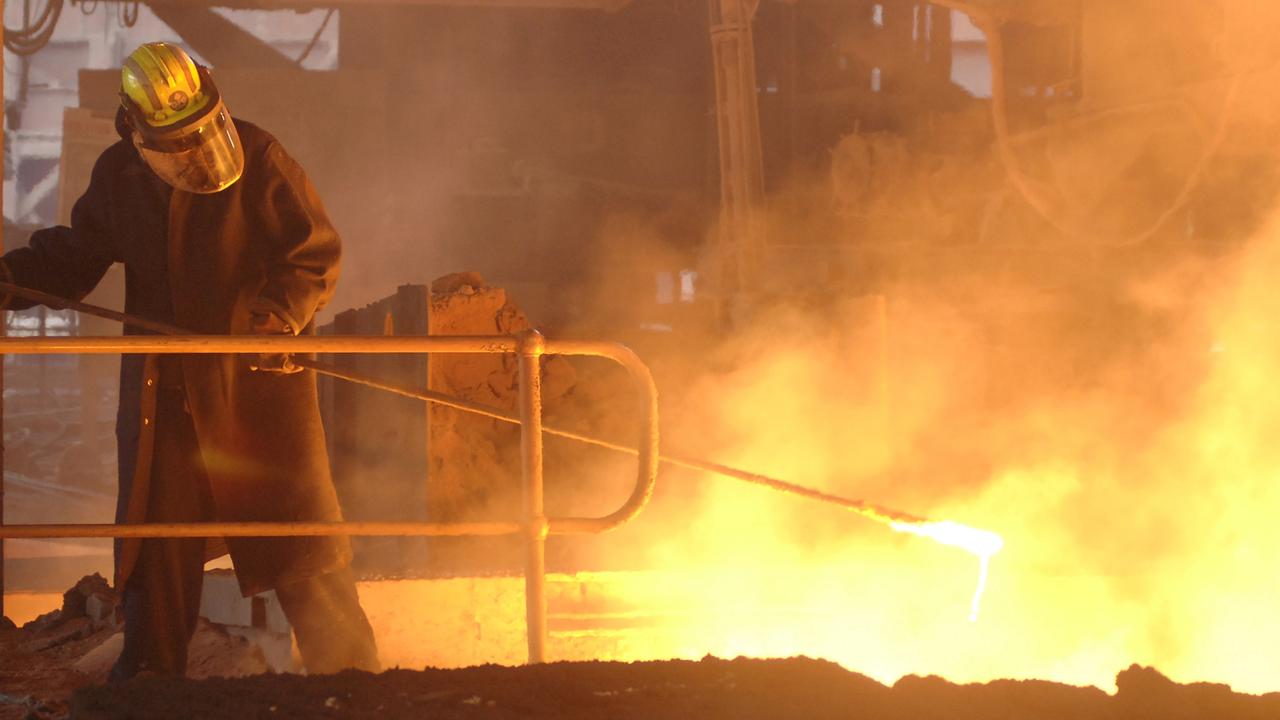Crane numbers peak as construction slows: RBL
The number of cranes that can be spotted across Australia’s skyline has peaked as construction begins to slow according to the latest RLB crane index.

Business
Don't miss out on the headlines from Business. Followed categories will be added to My News.
The number of cranes that can be spotted in Australia’s skyline has peaked as construction begins to slow.
Rider Levett Bucknall’s first quarter Crane Index has revealed 835 cranes are currently erected around the country – the second highest level since the data started in 2012. It was only beaten by 868 reported at the end of last year.
Over the past six months, 292 new cranes were added to new development sites, while 300 were removed from projects nearing completion, a net difference of 33.
Rider Levett Bucknall’s Oceania director of research and development, Domenic Schiafone, said “the continuing strong number of cranes observed correlates with the strong national activity numbers”.
Sydney continues to be the main driver of the crane count, accounting for 365, followed by 189 in Melbourne, 77 in Brisbane, 56 on the Gold Coast, and 51 in Perth.
The Sunshine Coast has 20 cranes, beating 18 in Adelaide, 17 in Canberra, 16 in Wollongong, and 13 on the Central Coast. Cranes were in the single digits in Newcastle (9), Darwin (4) and Hobart (1).
The index is considered a barometer for construction activity, which has performed well in recent years.
Commercial construction has proved particularly robust through the pandemic period, led by activity in the industrial sector.
Work for last calendar year was up by 0.7 per cent, or $1.4bn, across Australia compared to 2021, according to the latest Australian Bureau of Statistics preliminary construction activity data.
Non-residential activity was up by 2.9 per cent, but housing construction slipped 3.5 per cent, or $2.7bn. Engineering activity was up by 2.9 per cent or $2.5bn.
The index found national crane numbers fell in all sectors except civic, civil and education over the past six months, while there was one fewer residential crane recorded this year compared to the peak in the third quarter of 2022.
The biggest change in crane numbers was in Melbourne, Mr Schiafone said. In the September quarter of the 2019 edition, construction required 68 cranes. The index has steadily fallen since, with just 26 cranes now active.
In comparison, cranes in Sydney and Barangaroo area have risen from 29 to 30.
He attributes this to the fewer number of workers heading back to the city and CBD post-Covid-19.
“When analysing the numbers of cranes centred around the key capital cities post Covid-19, cranes within the CBD of Melbourne (Hoddle Grid, Docklands and Southbank) have fallen significantly,” Mr Schiafone said.
“With less development being undertaken across the district, less construction and associated workers are frequenting the hospitality, retail and other services available within the CBD … pressure is on retail, hospitality and commercial businesses to rebound to pre-pandemic levels of activity.
“Lower levels of crane activity highlighting lower levels of construction activity within the CBD may be contributing to the lengthening reawakening of the district.”
Sydney crane levels fell from an index peak of 235 recorded last quarter, to now sit at 225, reflecting a 4 per cent decrease.
More Coverage
Originally published as Crane numbers peak as construction slows: RBL









